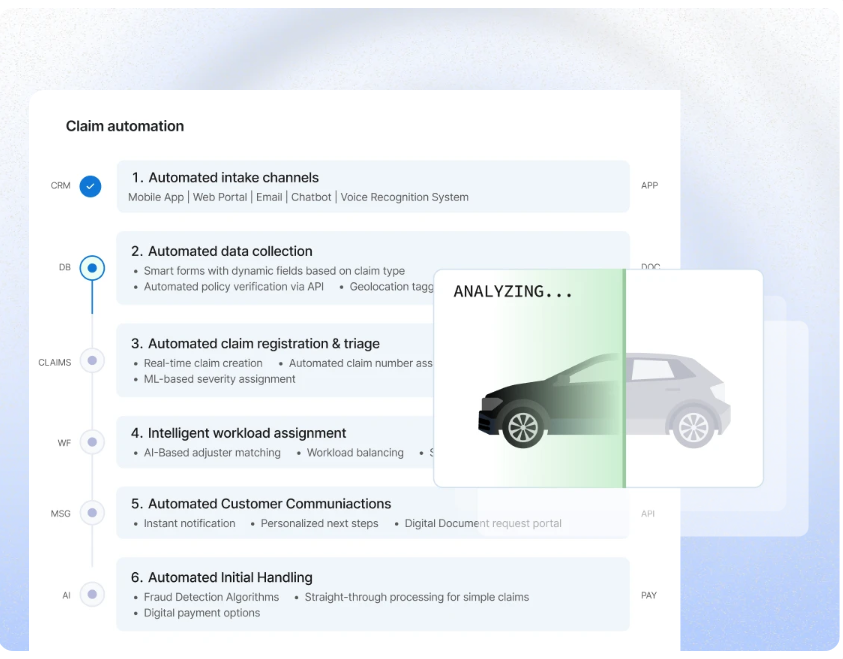Choosing the right Learning Management System (LMS) is a big decision.
Whether you’re a business looking to train employees, a school aiming to educate students, or an organization trying to provide online courses, the right LMS can make all the difference.
But with so many options out there, how do you know which one is best for you?
Don’t worry we’ve got you covered! Here are 13 things you need to know when choosing an LMS.
Table of contents
- What is a Learning Management System?
- What Is the Purpose of a Learning Management System?
- What Are the Different Types of LMS?
- LMS vs LXP: What’s the Difference?
- How Does an LMS Improve Learner Engagement?
- 13 Things to Know When Choosing a Learning Management System
- 1. Understand Your Needs:
- 2. Ease of Use:
- 3. Customization Options:
- 4. Scalability:
- 5. Mobile Compatibility:
- 6. Content Compatibility:
- 7. Integration Capabilities:
- 8. Reporting and Analytics:
- 9. Support and Training:
- 10. Security and Compliance:
- 11. Pricing and Budget:
- 12. User Feedback and Reviews:
- 13. Future proofing:
- Conclusion
- FAQ

What is a Learning Management System?
A Learning Management System (LMS) is a software tool that helps companies manage and deliver training programs.
Just like we use Google Docs for writing or QuickBooks for managing finances, a good LMS makes it easier for organizations to provide learning opportunities.
The best LMS platforms focus on two key tasks: organizing training content and making it simple to deliver to employees.
What Is the Purpose of a Learning Management System?
A Learning Management System (LMS) helps companies deliver and track training in one central place.
While it offers benefits like cost savings and security, its main goal is to make learning easier to manage.
The way an LMS looks and functions may differ depending on a company’s needs, but it generally helps with:
- Enrolling employees in courses and delivering training
- Tracking and analysing learning progress
- Identifying skill gaps
- Managing course content
- Enabling communication between trainers and learners
Another key benefit of an LMS is that it helps learning professionals track data to ensure employees meet their learning goals.
Since each person learns at a different pace, having access to performance data can improve training outcomes.
This is especially useful in industries with strict regulations, like healthcare, aviation, finance, and pharmaceuticals.
A well-managed LMS ensures employees get the right training while staying compliant with industry rules.
What Are the Different Types of LMS?
There are 3 main ways to categorize an LMS:
1. Cloud-Based vs Installed LMS:
- Installed LMS: Requires setup on a company’s own servers, needs IT maintenance, and is more expensive.
- Cloud-Based LMS: Hosted online, easier to maintain, lower costs, and includes automatic updates.
2. Free vs Commercial LMS:
- Free LMS: Good for startups with tech experts who can manage it.
- Commercial LMS: Ideal for larger businesses, especially those needing compliance features.
3. Open-Source vs Proprietary LMS:
- Open-Source LMS: Allows companies to modify the software freely but requires more maintenance.
- Proprietary LMS: Owned and maintained by a vendor, offering full support but limited customization.
Since no single LMS fits every company, organizations must choose based on their specific needs.
Learn More: Best Enterprise Learning Management System (LMS)
LMS vs LXP: What’s the Difference?
- LMS (Learning Management System): Focuses on storing, delivering, and tracking company training. Content is managed by an administrator, such as an HR or L&D professional.
- LXP (Learning Experience Platform): Creates a more personalized learning experience. Employees can contribute learning materials, making training more collaborative.
How Does an LMS Improve Learner Engagement?
An LMS boosts engagement by giving employees easy access to training materials from any device, which is especially important for remote workers.
Engagement depends on factors like course design, motivation, and ease of access.
Modern LMS platforms also support informal and blended learning, allowing employees to take control of their own learning journey.
Instead of relying solely on instructors, learners can explore and find answers on their own, with trainers acting as guides rather than lecturers.
13 Things to Know When Choosing a Learning Management System
1. Understand Your Needs:
Before you even start looking at LMS options, take a step back and think about what you really need. Ask yourself:
- Who will be using the LMS? (Employees, students, customers, etc.)
- What kind of content will you deliver? (Videos, quizzes, documents, etc.)
- How many users will there be?
- What are your goals? (Certifications, skill development, compliance training, etc.)
Understanding your needs will help you narrow down your options and avoid paying for features you don’t need.
2. Ease of Use:
An LMS should make learning easier, not harder. If the system is too complicated, your users (and even your admins) will struggle to use it. Look for an LMS with:
- A clean, intuitive interface
- Easy navigation
- Simple course creation tools
- Mobile-friendly design
A good rule of thumb: If you need a manual to figure out how to use it, it’s probably not the right choice.
3. Customization Options:
Every organization is unique, so your LMS should be able to adapt to your specific needs. Look for customization features like:
- Branding options (logos, colours, etc.)
- Customizable course templates
- Flexible user roles and permissions
- Ability to add your own content
The more you can tailor the LMS to fit your organization, the better.
4. Scalability:
Your needs today might not be the same as your needs tomorrow. Choose an LMS that can grow with you. For example:
- Can it handle more users as your organization grows?
- Does it support additional features or integrations if needed?
- Is it flexible enough to adapt to changing learning trends?
Scalability ensures that your LMS remains useful in the long term.
5. Mobile Compatibility:
In today’s world, people want to learn on the go. Make sure your LMS is mobile-friendly. This means:
- Responsive design that works on smartphones and tablets
- Mobile apps for iOS and Android (if possible)
- Offline access to courses for users without constant internet access
A mobile-compatible LMS allows users to learn anytime, anywhere.
6. Content Compatibility:
Your LMS should support the types of content you want to deliver. Check if it works with:
- Videos, PDFs, and PowerPoint presentations
- SCORM or xAPI (common e-learning standards)
- Interactive content like quizzes and surveys
- Third-party content providers (if needed)
If your LMS can’t handle your content, it’s not the right fit.
7. Integration Capabilities:
Your LMS shouldn’t exist in a vacuum. It needs to work seamlessly with other tools you use, such as:
- HR software (for employee training)
- Payment gateways (if you’re selling courses)
- Video conferencing tools (for live sessions)
Integration capabilities save time and make your workflow smoother.
8. Reporting and Analytics:
Tracking progress is key to understanding how effective your training programs are. Look for an LMS with robust reporting and analytics features, such as:
- User progress tracking
- Quiz and test scores
- Completion rates
- Customizable reports
Good analytics help you identify areas for improvement and measure the success of your training.
9. Support and Training:
Even the best LMS can have hiccups. Make sure the provider offers:
- Reliable customer support (24/7 is ideal)
- Training resources for admins and users
- A knowledge base or FAQ section
- Regular updates and maintenance
Good support ensures that you’re never left stranded when issues arise.
10. Security and Compliance:
Your LMS will likely handle sensitive data, so security is a must. Look for features like:
- Data encryption
- Regular backups
- GDPR or other compliance certifications
- Secure user authentication
A secure LMS protects your data and gives you peace of mind.
11. Pricing and Budget:
LMS pricing can vary widely, so it’s important to understand what you’re paying for. Consider:
- Upfront costs vs. subscription models
- Hidden fees (e.g., for additional users or features)
- Free trials or demos to test the system
- Return on investment (ROI) for your organization
Choose an LMS that fits your budget without compromising on essential features.
12. User Feedback and Reviews:
Don’t just take the provider’s word for it see what other users are saying. Look for:
- Reviews on trusted platforms
- Case studies or testimonials
- Feedback from organizations similar to yours
- Ratings for customer support and ease of use
User feedback can give you valuable insights into the pros and cons of each LMS.
13. Future proofing:
Technology is always evolving, and your LMS should be able to keep up. Consider:
- How often the provider updates the system
- Whether they incorporate new learning trends (e.g., gamification, microlearning)
- Their roadmap for future features
- Their reputation in the industry
A future-proof LMS ensures that you won’t need to switch systems again in a few years.

Conclusion
Choosing the right LMS is a big decision, but it doesn’t have to be overwhelming.
By keeping these 13 factors in mind, you can find a system that meets your needs, fits your budget, and helps you achieve your learning goals.
Take your time, do your research, and don’t be afraid to ask for demos or trials. After all, the right LMS can transform the way you deliver training and education.
So, what are you waiting for? Start your search today and find the perfect LMS for your organization!
FAQ
An LMS (Learning Management System) is a tool to create, manage, and deliver online courses or training programs.
It helps you organize training, track progress, and deliver courses easily to employees, students, or customers.
Costs vary. Some start at a few hundred dollars per month, while others can be more expensive. Look for one that fits your budget.
Yes! Most providers offer free trials or demos so you can test the system first.
SCORM is a standard that ensures your e-learning content works well with different LMS platforms.
Look for one with a simple, user-friendly interface. Test it during a demo to see if it’s easy for you and your team.
Choose an LMS with good customer support, tutorials, and training resources to help you get started.
Yes! Many LMS platforms let you add your logo, colors, and customize course templates to match your brand.








